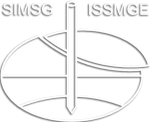Rough pile stereolithography for centrifuge modelling
Rough pile stereolithography for centrifuge modelling
The capacity of bored cast in situ concrete piles in clay is typically governed by shaft resistance, which is usually achieved through skin friction. Skin friction is dependent on the proportion of the soil strength that is mobilised by the pile – and can vary depending on the roughness of the pile. Valuable insights into the behaviour of piles under loading can be obtained through physical model testing at reduced scale in a geotechnical centrifuge if the soil pile interface can be modelled appropriately. Therefore, it is important to consider how the surface of a pile should be modelled to achieve a comparable roughness between the model and the prototype pile. In this paper, a method for designing a pile with a specified roughness using stereolithography, also known as 3D printing, is described. The normalised roughness of the model pile is determined based on the likely failure mechanism of the pile and the mean soil particle size. The rough surface profile is then designed using 3D modelling software with the calculated arithmetic average surface roughness. Data are presented from preliminary centrifuge model tests on piles with different surface roughness.
Greta Sabaliauskaite; S. Divall; Andrew M. McNamara; S. E. Stallebrass; R. Neil Taylor
18th European Conference on Soil Mechanics and Geotechnical Engineering (ECSMGE2024)
D - Current and new construction methods
